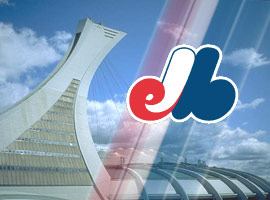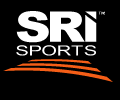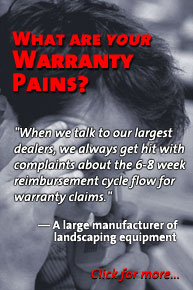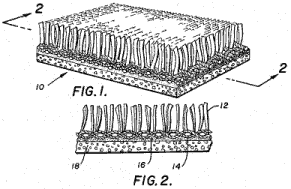February 10, 2004 |
ISSN 1550-9214 |
Turf Warranties:In some of North America's largest sports stadiums, the grass is always greener, thanks to AstroTurf and its successors. Unlike the sods it replaces, an artificial sports surface comes with an eight-year warranty. But if you're planning to make a claim, bring your lawyer.Back in the 1960s, when outdoor sports such as American football and baseball first began moving indoors into domed stadiums, who would have predicted that artificial sports surfaces would become big business not only for their manufacturers, but also for their lawyers? Yet here we are, almost 38 years after the first game played upon AstroTurf, and the top two companies in the artificial turf industry are fighting just as hard in the courtroom as they do on the field of play.
Replacing AstroTurfSRI Sports Inc., formerly known as Southwest Recreational Industries Inc., is a subsidiary of American Sports Products Group Inc. Southwest acquired rights to the AstroTurf brand name in 1994, and now markets artificial surfaces under the brand names of AstroPlay, NeXturf, AstroLawn, and Stadia Turf. Sales of AstroTurf have mostly trailed off within the U.S., although some installations continue to take place overseas. After multiple seasons of use by both the Astros (baseball) and Oilers (football), the Houston AstroDome's field surface was replaced in 1978 and again in 1988. The latter field surface was notable for allowing baseball-to-football conversions in three hours or less. Much like a padded carpet, one surface is rolled up and the other sports field is rolled out. However, the Astros moved out of the AstroDome into Enron Field (now called Minute Maid Park) in 2000, where the playing surface is natural grass. The Oilers changed their name and moved to Tennessee in 1997, where their field also is now made of natural grass. In 2002 another professional football team filled the void in Houston, but they also play on a natural grass field in a new facility called Reliant Stadium, which has a retractable roof to allow in sunlight. Carpeting the CornhuskersSRI's major competitor is a Canadian company called FieldTurf Inc. That company's big break came in 1999 when it installed the new artificial surface for Memorial Stadium in Lincoln, Nebraska, home of the University of Nebraska's Cornhuskers. For those readers who are not followers of college football, this stadium is the sports equivalent of a cathedral, which the team's fans fill in a sea of red. Every home game since 1963 has been sold out. So for FieldTurf, getting this job was something akin to getting the carpet contract for the Vatican. In a Feb. 2003 article, the Austin Business Journal estimated SRI Sports' artificial turf sales at $164 million for 2002. The company is considered to be the market leader, while FieldTurf is portrayed as the up-and-coming challenger. In an April 20, 2003 article, the New York Times reported FieldTurf's annual revenue at $50 million, growing at a rate of 60% per year. Both SRI and FieldTurf are privately-held companies. In terms of a coarse indicator of market share, SRI Sports has provided five of the 11 artificial surfaces now used for professional football, and two of the four used for professional baseball, for a total of six out of 15. Professional football and/or baseball teams in Buffalo, Indianapolis, Minnesota, New Orleans, St. Louis, and Toronto play on AstroTurf or AstroPlay, while the teams in Philadelphia played on SRI's NeXturf until 2003. The Minnesota Vikings and Twins plus the New Orleans Saints are expected to make the switch from SRI's AstroTurf to AstroPlay surface later this year. Both of the Philadelphia teams that used to play in Veterans Stadium have now left the facility. The Philadelphia Eagles (football) played the just-completed 2003-04 season in another stadium, and the Phillies (baseball) will open their 2004 season in a new facility. Both of these new stadiums use natural grass fields. Meanwhile, FieldTurf supplied the artificial surfaces used in four NFL stadiums plus the Aloha Bowl (used for the annual NFL all-star game), and one baseball stadium. Come opening day, the company should have a second baseball field in Montréal, once Olympic Stadium converts from AstroTurf to FieldTurf. This will raise its total to seven out of the 15 artificial surfaces used for professional baseball or football. Only two other manufacturers have a toe-hold in the major leagues. A small company called Sportfield LLC provided the RealGrass Synthetic Turf System used by the Dallas Cowboys, and a Canadian company called Sportexe provided the new Momentum Turf System used at M&T Bank Stadium, home of the Baltimore Ravens.
| |||||||||||||||||||||||||||||||||||||||||||||||||||||||||||||||||||||||||||||||||||||
| Location | Team | Stadium | Surface | Installed |
| Atlanta | Falcons | Georgia Dome | FieldTurf | 2003 |
| Baltimore | Ravens | M&T Bank Stadium | Momentum | 2003 |
| Buffalo | Bills | Ralph Wilson Stadium | AstroPlay | 2003 |
| Dallas | Cowboys | Texas Stadium | RealGrass | 2002 |
| Detroit | Lions | Ford Field | FieldTurf | 2002 |
| Honolulu | Pro Bowl | Aloha Stadium | FieldTurf | 2003 |
| Indianapolis | Colts | RCA Dome | AstroTurf | 1983 (3) |
| Minneapolis | Twins, Vikings | Metrodome | AstroPlay | 2004 (3) |
| Montréal | Expos | Olympic Stadium | FieldTurf | 2004 (1) |
| New Orleans | Saints | Superdome | AstroPlay | 2004 (1) |
| New York | Giants, Jets | Giants Stadium | FieldTurf | 2003 |
| Philadelphia | Phillies | Veterans Stadium | NeXturf | 2001 (2) |
| Seattle | Seahawks | Seahawks Stadium | FieldTurf | 2002 |
| St. Louis | Rams | Edward Jones Dome | AstroTurf | 1995 |
| Tampa Bay | Devil Rays | Tropicana Field | FieldTurf | 2000 |
| Toronto | Blue Jays | SkyDome | AstroTurf | 1989 (3) |
(1) Scheduled to open the 2004 season with new surfaces.
(2) Moving in April 2004 to a new stadium with a grass field.
(3) Planning to migrate to FieldTurf.
All told, 12 NFL teams play in 11 stadiums covered with an artificial surface. Four MLB teams play on artificial turf, assuming all goes well for a grass debut by the Phillies in April. The remaining 20 professional football teams play on natural grass, as do 26 of the 30 professional baseball teams.
FieldTurf's Scorecard
Darren Gill, marketing manager for FieldTurf, said the company has installed the artificial sports surfaces in Giants Stadium (in New Jersey for two football teams), Seahawks Stadium (in Seattle for football), the Georgia Dome (in Atlanta for football), Ford Field (in Detroit for football), Michigan Stadium (in Ann Arbor, Michigan for college football), and Tropicana Field (in St. Petersburg, Florida for baseball).
 With the opening of the 2004 baseball season in April, the Montreal Expos will begin using a new removable FieldTurf system in Olympic Stadium. FieldTurf also is installed at Boston University's Nickerson Field (for soccer), and at the Tokyo Dome (for baseball).
With the opening of the 2004 baseball season in April, the Montreal Expos will begin using a new removable FieldTurf system in Olympic Stadium. FieldTurf also is installed at Boston University's Nickerson Field (for soccer), and at the Tokyo Dome (for baseball).
Numerous professional and university teams also have installed FieldTurf on their practice fields -- even some who are sticking to real grass for their stadiums. Also, while U.S. football and baseball stadiums are the company's high-profile installations, the bulk of its sales come from schools and universities looking for a low-cost and low-maintenance alternative to grass. One study performed for a university found the monthly cost of a FieldTurf surface to be $985, versus $8449 per month for a natural grass surface.
Artificial Turf Warranties
Gill noted that all FieldTurf installations come with eight-year warranties, which is more or less the industry standard. "But our warranties," he said, "are the only ones backed by a third party insurer [Virginia Surety Company Inc., part of Aon Corp.]." Gill said that means whether FieldTurf thrives or disappears in the future, an insurance company will always be around to honor its warranty claims. In contrast, warranties issued by a small self-insured company would become worthless upon the demise of the manufacturer.
So far, all that's come back are minor repair jobs, Gill said. FieldTurf has yet to forward a warranty claim to its insurance carrier, he noted.
"FieldTurf invented the long pile infilled turf market," Gill said. "We came out with the long pile turf, with sand and rubber fill," he said. The result is a surface that more closely approximates natural grass, not only in the way the ball bounces but also in the way the players slide and fall. The competition, he said, "is basically installing carpet."
One field may look like another, but the athletes can tell the difference when either they or the ball hit the floor. The competition's surface responds like one would expect padded carpet over concrete to respond: it hurts humans and makes the ball bounce higher than it would on grass. FieldTurf is more like old fashioned grass and dirt, except it doesn't need watering and it doesn't die indoors or in winter. FieldTurf avoids giving players the "rug burn" associated with older artificial surfaces, but critics say it sheds tiny pellets of rubber that commonly find their ways into the masks and mouths of players.
Rather shockingly, a survey conducted in early 2003 by the NFL Players Association found the FieldTurf surface installed at Seahawks Stadium to be the third favorite among 1,300 players (Tampa Bay and Arizona were #1 and #2). This was the first time an artificial surface ranked in the top five. Meanwhile, four of the bottom five were artificial surfaces. Some AstroTurf installations are so reviled by certain football and baseball players, in fact, that they routinely request trades to teams that play on grass. While the urban legends surrounding alleged links between artificial turf and sports injuries remain unproven, it is no exaggeration to say that AstroTurf would never be on any player's list of favorite fields.
FieldTurf, however, was engineered with the safety and comfort of players in mind. It should come as no surprise to hear that FieldTurf's CEO is a former Canadian Football League quarterback named John Gilman, and that several American NFL players have come on board as investors through a licensing and investing partnership they call the NFL QB Club. Gill said the club's members include Troy Aikman, John Elway, Warren Moon, Steve Young, and Randall Cunningham, among others. They invested in the company a sum that's been reported as high as $1 million, perhaps in memory of all the rug burns and pulled muscles they suffered on other surfaces.
Problems with Reconfiguration
The main gripe with FieldTurf is that it's not as easily removable as other types of field coverings, which like a thick carpet can be rolled up and put away while an outdoor stadium or an indoor dome hosts a concert, trade show, or other types of events for which a playing field is not required. FieldTurf maneuvered around this limitation by designing a system that could temporarily be covered, but this does not work well in cases where the seating also moves, or in cases where the desired temporary covering would be an ice hockey rink configuration.
FieldTurf has, however, now survived a heavy metal concert. At Seahawks Stadium, the operators covered the artificial turf for a day-long concert in August, and both they and the field lived to tell the tale. Featured acts in the Seattle stop of the "Summer Sanitarium" tour included Metallica, Limp Bizkit, Linkin Park, Mudvayne, and the Deftones. Public affairs manager Brian Surratt said the stadium's operators also sometimes cover the FieldTurf with a natural grass surface for soccer matches. First & Goal Inc. and the Washington State Public Stadium Authority, the stadium operators and owners, respectively, are "very happy" with the FieldTurf installation, Surratt added.
The main gripe with natural grass, of course, is the cost of maintenance. In northern climates it takes a heroic effort to keep the grass green through the winter months, while in the southwestern deserts it takes a lot of water to keep it alive through the long hot summer. But there also is an opportunity cost with grass. A typical grass stadium cannot be used as heavily just for sports, nor can it survive as many summer concerts as an artificial surface. Most baseball stadiums wisely wait until late in the season when their teams are out of contention before booking something as sod-trodding as a day-long metalfest.
When the FieldTurf installation is completed in time for the Montréal Expos' season opener, Olympic Stadium will use a new removable tray system that allows the operators to not only change the surface by making overlays, but also by picking up and removing the surface altogether. One reason FieldTurf has done better outdoors than indoors is because dome operators will sometimes want to strip the floor down to cement and drive forklifts over it, perhaps setting up a trade show or product exposition. Then again, both AstroTurf and NeXturf also suffer from the wear and tear of constant reconfigurations of the floors and seats.
The Veterans Stadium Debacle
The process of converting an artificial field's configuration from one sport to another, in fact, resulted in one of the most public stadium warranty failures of all time. On August 13, 2001, a Monday night, the Philadelphia Eagles were scheduled to host the Baltimore Ravens in a nationally-televised football game at Veterans Stadium. It was supposed to be the first football game played on the stadium's then-new NeXturf artificial surface, which had been installed at a cost of $1.89 million in early 2001 to replace the stadium's five-year-old AstroTurf surface.
However, before the game began, Ravens coach Brian Billick tripped on some uneven sections of the field near where the bases and pitcher's mound would have been in a baseball configuration. He and Eagles coach Andy Reid then asked the referees to call off the game. Inc. magazine, which covered the debacle in an article called "Turf Wars," sized the losses suffered from the cancellation of that game at $5 million.
The Philadelphia City Council's Committee on Parks, Recreation and Cultural Affairs held a hearing on Dec. 18, 2001, at which the city's Deputy Controller Anthony Radwanski testified that the problem seemed to arise after the field was converted from its baseball to football configuration, specifically "spongy turf around the baseball cutouts following rain," he said. Radwanski said the day after the game was cancelled, his boss directed him to investigate whether the artificial surface met the specifications of the contract, and whether the cost of correcting the problem should be paid by city taxpayers or by the manufacturer.
The Office of the Controller's report, delivered on Oct. 15, 2001, also faulted the architectural firm of Ewing Cole Cherry Brott, which performed the product evaluations that resulted in a sole-source bid for SRI's NeXturf being issued by the city in November 2000. The company had worked on every major project in Veterans Stadium since it opened, but Radwanski said they just didn't leave enough time for the planning. One reason was the imperative to fix the old AstroTurf field, which the report called "the worst playing surface in professional sports," for the final few seasons before the Eagles and Phillies departed the Vet for good.
Radwanski also suggested that perhaps Ewing Cole was too close to SRI Sports to render an objective opinion about any of its competitors. "No manufacturer could, for all intents and purposes, participate in the process without passing Ewing Cole's muster," he told the City Council. "Even those permitted to plead their case had their message passed through Ewing Cole's evaluative filter. The perception created was that one firm, Southwest, had a leg up on all the rest. Because in the transaction of public business, perception is often reality, we feel it was probably not a wise decision to appoint as judge of a competitive process an entity with an extensive history with one of the competitors."
Radwanski faulted SRI Sports for not providing the Vet's maintenance crew with detailed instruction manuals for the baseball-to-football conversion procedure, especially regarding the process surrounding the cleaning, filling, and covering of the cutouts for the bases which he said caused the Aug. 13 cancellation. He faulted Ewing Cole for writing contract specifications that only one company could meet, because the architects said the required surface had to be less than 1-1/2 inches thick to fit under the stadium's moveable bleachers. However, he also faulted the city for not doing a better job of monitoring SRI Sports and Ewing Cole, and specifically for not making sure the problems around the bases were addressed by the contractors before the Aug. 13 game.
Radwanski concluded his testimony with the statement that "Southwest Recreational Industries should be held responsible for all remedial costs associated with this project. The turf installation contracts states the following: 'The contractor shall submit its manufacturer's warranty which guarantees the usability and playability of the synthetic turf system for its intended uses for an eight-year period commencing with date of substantial completion [April 5, 2001].' Our understanding of this passage is that Southwest is responsible for ensuring that the condition of the turf is such that it can be used for its intended purpose. Because on August 13th the turf was not in a playable condition, we believe Southwest was responsible for this defect and should be held fully accountable."
During subsequent testimony before the committee, Southwest president Reed Seaton said the city made no warranty claims for ripped seams on the old AstroTurf surface between 1995 and 2001, because the rips were considered to be damage caused by the people and vehicles performing baseball-to-football conversions, and were not considered product defects. He also said credits were not sought nor were they offered for the replacement in Year 6 of a field that was supposed to last much longer. As for post-August 13 matters, he declined to answer any questions about either the conversion process or liabilities, citing the likelihood of future litigation.
More than two years later, the outcome of this warranty claim remains uncertain. Last week, SRI Sports corporate counsel Bob Wolesensky declined to comment about liability for the lost game. "I'm confused how that relates to a warranty question," Wolesensky told Warranty Week. When told the issue was the City Controller's conclusion that his company was responsible for the condition of the field that precluded the playing of the game, he said, "well, that's a matter of opinion."
 FieldTurf and SRI Sports have filed lawsuits against each other over the past few years, which Wolesensky also declined to comment upon. "I would refer you to the public record -- the pleadings, the documents of the case to see where it stands," he told Warranty Week.
FieldTurf and SRI Sports have filed lawsuits against each other over the past few years, which Wolesensky also declined to comment upon. "I would refer you to the public record -- the pleadings, the documents of the case to see where it stands," he told Warranty Week.
On its Web site, SRI Sports has two brief statements about the ongoing FieldTurf litigation, including a Nov. 26, 2003 press release and a Nov. 26, 2002 press release.
FieldTurf, meanwhile, has had little to say about its apparent legal setbacks versus SRI Sports. However, recently the company did announce that it has settled a patent infringement with another competitor, Sprinturf Inc. The chairmen of FieldTurf and Sprinturf apparently had a chat at a trade show in Florida, and realized the alleged infringement was inadvertent. A parallel infringement suit continues, however, between FieldTurf and Sportfield LLC, which installed the artificial turf for the Dallas Cowboys. That installation is the only non-SRI and non-FieldTurf artificial surface left in the big leagues.
Other Surface News
Meanwhile, SRI is engaged in an entirely separate and unrelated warranty dispute with Armstrong Holdings Inc., the parent company of Armstrong World Industries Inc. Armstrong, of course, is a manufacturer of floors, ceilings and cabinets. In 1999, Armstrong sold its DD Martin Surfacing Inc. division to SRI Sports for approximately $14 million.
Martin Surfacing, founded in 1974 and headquartered in Hunt Valley, Maryland, was well-known for its running tracks and gym flooring systems. SRI combined Martin Surfacing's sports surface operations with its own. Meanwhile, Armstrong renamed what was left behind of Martin Surfacing, calling the product-less and employee-less unit Nitram. On its Web site, Armstrong states that since then, "Nitram has been faced with numerous existing and potential claims, including claims from former employees and warranty claims from former customers."
At the end of 2000, Armstrong filed for bankruptcy, a process from which it has yet to emerge. In fact, the last press release posted on its Web site states that shareholders have approved a plan to dissolve the company.
Calls to the company soliciting further details about the Martin warranty matter and the bankruptcy proceedings went unreturned, including several attempts during which the phone was not even answered.
According to a Nov. 29, 2003 article in the Lancaster New Era, Armstrong told the bankruptcy court that it is still owed $6.3 million by SRI Sports. SRI counters that it is owed $10 million in damages it suffered following the acquisition of Martin Surfacing.
Briefly, SRI alleges that Armstrong failed to honor warranty claims on Martin Surfacing jobs completed before the acquisition. SRI had to honor claims from some 21 customers itself, laying out $309,000 of its own money. Furthermore, the adverse publicity cost SRI sports an additional $10 million in lost sales.
Bob Wolesensky, SRI's corporate counsel, last week said the Armstrong lawsuit concerns a transaction that has "nothing to do with failed warranties on a product or project." As with the FieldTurf and Philadelphia incidents, he said that everything SRI Sports would have to say about the Armstrong matter already was in the public domain.

|
This Week’s Warranty Week Headlines | ||
|
AutoWeek, Feb. 10, 2004 | ||
|
Apple Computer's latest Form 10-Q acknowledges five separate class action suits regarding iPod battery life. Reuters via News.com, Feb. 10, 2004 | ||
|
Aon Warranty Group and Guitar Center announce a joint warranty protection plan initiative that includes unlimited repairs, free shipping, online repair authorizations, full replacement on specific models, and doubles Guitar Center's return policy and price guarantee. Press Release, Feb. 10, 2004 | ||
|
Philips to stop selling VCRs in Australia immediately but will continue repairing units still under warranty; soaring popularity of DVDs cited. Australian Broadcasting Corp., Feb. 10, 2004 | ||
|
Assurant Inc. completes initial public offering of 92 million shares, Fortis Insurance NV retains 35% ownership. NYSE symbol is AIZ. Press Release, Feb. 6, 2004 | ||
More Warranty Headlines below | ||

|

|
|
|

|
Warranty Headlines (cont’d) | ||
|
Warranty chain management is real, and it's bigger than Hollywood. Line56.com, Jan. 27, 2004 | ||
|
Apple's overlooked upside: Wall Street yawns following strong earnings report, citing slack sales and hardware problems. Business Week, Jan. 26, 2004 | ||
|
Technology columnist Gene Steinberg details the problems and solutions to Apple Computer's recent hardware glitches. USA Today, Jan. 26, 2004 | ||
|
Lincoln Journal Star publishes a special section and online timeline of what went wrong at National Warranty Insurance RRG and Warranty Gold Ltd., and what regulators are now doing about these extended warranty insolvencies. Lincoln Journal Star, Jan. 26, 2004 | ||
|
NHTSA denies petitions requesting modification of 500-vehicle threshold requiring comprehensive Early Warning Reporting. Federal Register via Syncata Web site, Jan. 23, 2004 | ||
More Warranty Headlines below | ||

|
Related Articles From Warranty Week |



